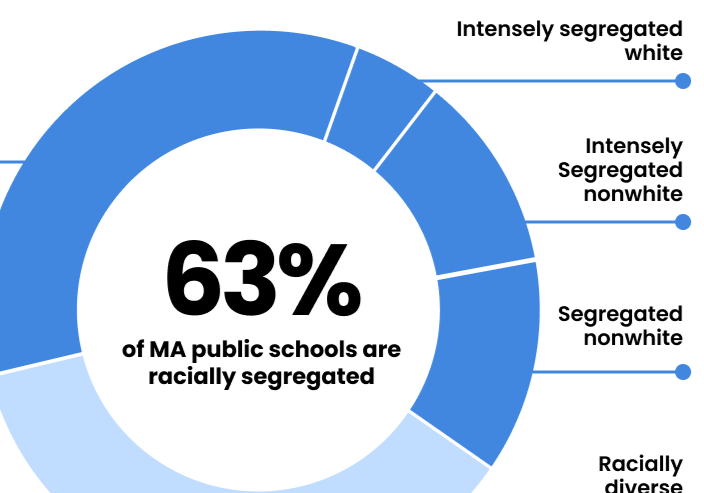We can build the future our children deserve.
Every child deserves access to well-resourced, integrated public schools. We partner with local communities to make that promise a reality.

Featured updates and resources

-

Massachusetts schools are some of the most segregated in the US
We’ve just launched in Massachusetts, and we’re working to change that.
-

How concentrated poverty affects student success
A resource for rethinking the impact of economic segregation on student success.
-

5 policy solutions to end school segregation
State policymakers can pave the way to diverse, well-resourced schools.
Seventy years after Brown v. Board, separate is still inherently unequal.
"We conclude that, in the field of public education, the doctrine of ‘separate but equal’ has no place. Separate educational facilities are inherently unequal." — Brown v. Board, 1954
Educational resources—money, great teachers, rigorous coursework, and more—remain correlated to the whiteness of a school or district’s student body. That’s wrong. But it’s reality.
And schools today are more racially segregated than they were in the 1970s.
If we want to give students of color equal educational opportunity—and if we want to prepare students of every race to thrive in an increasingly diverse, interconnected world — children from all backgrounds need to learn together in excellent, well-resourced, diverse schools led by diverse educators.
School Integration works.
Court-ordered desegregation led to life-changing results for students.
30% increase in adult wages for Black students¹
30 point increase in graduation rates for Black students²
19% increase in likelihood of graduating from high school for Hispanic students³
More than 20 point decrease in poverty rates for Black students⁴
1. Source: Johnson, Rucker C. Children of the Dream: Why School Integration Works (2019). New York, NY: Basic Books and Russell Sage Foundation Press, page 63, Figure 2.9
2. Johnson, Rucker C. Children of the Dream: Why School Integration Works (2019). New York, NY: Basic Books and Russell Sage Foundation Press, page 61, Figure 2.7
3. Antman, Fransisca and Kalena Cortes, The Long-Run Impacts of Mexican-American School Desegregation (2022). The Brookings Institution. Available- https://www.brookings.edu/articles/the-long-run-impacts-of-mexican-american-school-desegregation/
4. Source: Johnson, Rucker C. Children of the Dream: Why School Integration Works (2019). New York, NY: Basic Books and Russell Sage Foundation Press, page 64, Figure 2.10




